
In a large family of Vinogradovyh plants with seedless berries stand out especially. Gardeners appreciate seedless grape varieties for their unpretentiousness, excellent taste, and the ability to use them for preparing dried fruits. Berries without seeds taste good, fragrant, suitable for desserts, wine making, liquors, delicious juices. After drying, raisins are obtained, in which most of the vitamins and minerals are retained.
Content
Seedless Grape Properties
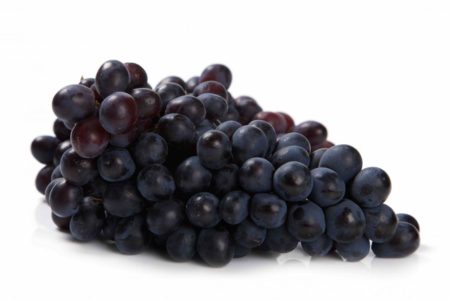
Seedless grapes (raisins) have seeds in the berries, but their weight varies. In the group of seedless varieties, there is a classification into categories, where the criterion is the weight of the seeds:
- up to 6 mg;
- 6.0-10.0 mg;
- 10.0-14.0 mg;
- from 14.1 and more.
The first category includes raisins without seeds or with small rudiments (primordia). This grape is considered the most delicious, because even if the seeds are there, they are soft and almost invisible when eating. Berries of such varieties are more caloric than others, they are characterized by a high content of sugars.
The fourth category raisins are not quoted among gardeners, since its berries are small, the flesh contains quite large and tangible seeds.
Quiches are propagated by cuttings, layering. Ovaries form through pollination, but the seeds in the pulp are in their infancy. Breeders breed varieties in which, at the genetic level, there is a lack of seeds in the berries. Reproduction is possible even in the absence of seeds.
Benefits of Seedless Grapes
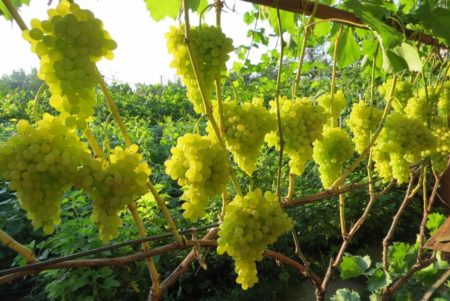
Seedless grapes are a favorite among gardeners and buyers. It is chosen because of the taste, simple care.
Benefits:
- unpretentiousness;
- frost resistance;
- high yields (100-300 kg per one hundredth);
- attractive presentation of berries;
- resistance to most diseases;
- sugar content of pulp (standard indicator - 20-22%).
These are common properties characteristic of varieties of raisins. In addition, each variety has its own "pluses":
- aroma;
- rich taste;
- suitability for fresh storage.
Kishmishy (black, white) is a raw material for raisins, production of high-quality wines, cognacs. The fruits of the varieties from the cinnamon group are seedless, used as a table and technical type (winemaking). Knowing how seedless grapes propagate, they get more productive new forms.
Popular seedless grape varieties
More than a hundred varieties of raisins have been bred. Gardeners choose suitable for yield, taste.
Radiant
The name is not given by chance. The berries are pinkish in color, the flesh shines through the skin under the sun, which makes them radiate. Radiant grapes - medium early, characterized by a powerful vine. 10-12 kg of fruits are harvested from the bush. Bunches weigh 400-900 grams, berries are large, slightly elongated. There are no seeds, the pulp is sweetish, with a refreshing taste.
Zaporizhzhya
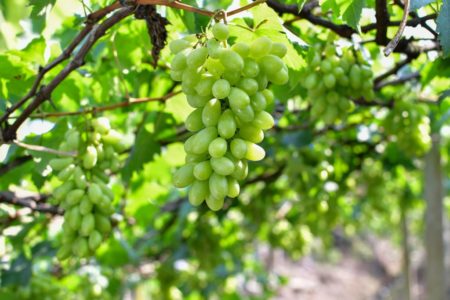
It is famous for its abundant harvests, from the bush at the end of summer they harvest 7-8 kg of berries.Winter-hardy, in the middle lane it is grown as a coverless culture (can withstand cold up to -26ºC). Fruits stably, rationing of the vine is required, otherwise overload occurs and productivity decreases. Bunches - 1.2-1.5 kg, dark purple berries are small, about 2-3 grams. The taste is rich, pleasant, with an original flavor of marmalade. Zaporizhzhya is resistant to major diseases of grapes, grows better on chernozems.
The black
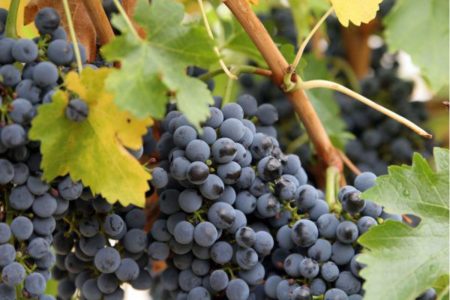
The variety was bred by domestic breeders, characterized by an early ripening period. Bushes form long sleeves. Leaves of medium size, with slightly curved edges. Color is emerald. Black grapes with dense pulp. The taste is fruity. Bunches grow to 600-700 grams. Included in a group of table grapes. Great dessert, also used for drying.
Jupiter
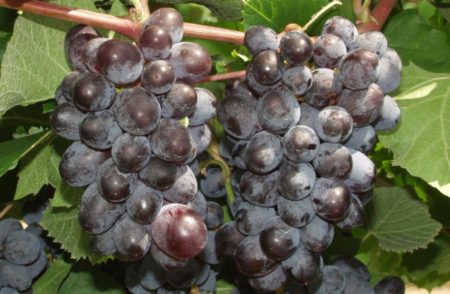
Grapes from the USA, ripen early (111-120 days). Seedlessness indicators are high (category 1), rudiments are rare. The fruits are large, 4-5 grams. First, the skin is reddish, with full ripeness it turns purple-red. The flesh is transparent, juicy, with a touch of labrusca. Advantages: high frost resistance, up to -27ºC, sugar content (20-21%), versatility of use.
Neptune
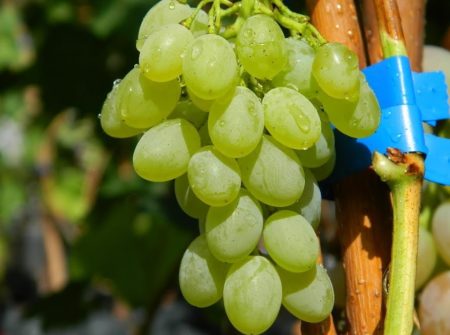
Bred in the USA, it is recommended for planting in areas of a small area. Gives results when cultivated on the balcony and loggia. Early sultanas (120 days), with juicy, whitish berries. The mass of each is 3-5 grams. The pulp is fleshy, with a fruity aroma. Sugar content - 16%. Differs in high commodity properties. The variety is suitable for transportation over long distances.
Mars
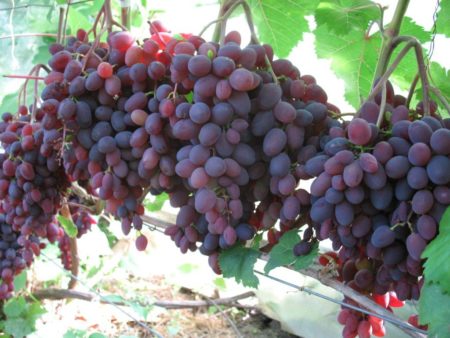
American grade, parents - Arkansas and Campbell Earley. Harvest is ready for harvest in 125-130 days. It is distinguished by great strength of growth, full maturation of the vine. The clusters weigh 300-400 grams, the berries are round, dark blue, almost black. The taste is pleasant, strawberry notes are felt. The skin is dense, detaches like a pouch. The seedless grape variety Mars is frost-resistant, disease-resistant. Requires mandatory normalization of bushes.
Kishmish Emerald
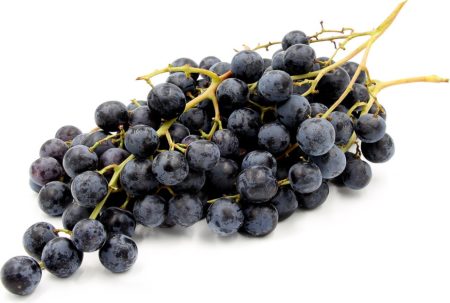
Hybrid form obtained by breeders from the United States. Differs in superearly (95-105 days) terms. Despite frost resistance, it is recommended to shelter for the winter. The clusters are large, densely packed with grapes. The weight of each bunch is 500-800 grams. Rounded massive grapes weigh up to 5 grams, color - purple, blue-black. Sugar content - 18%. It is recommended to withstand the grapes on the vine until fully ripe. Fruits eventually acquire a rich taste, sugar content.
Arsenievsky
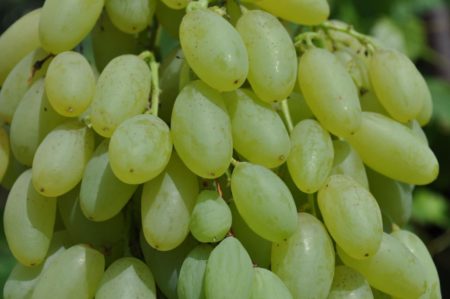
Forms stocky bushes, clusters massive, 900-1400 grams. Amber-colored berries are slightly elongated, with fleshy juicy pulp. Weight - 10-12 grams. Pleasant taste with pronounced notes of muscat, large berries are the hallmarks of Arsenyevsky raisins. Used as table grapes.
Kesha
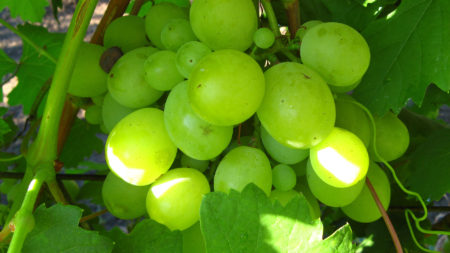
A popular variety among winegrowers, bred in the Kuban. Included in the category of arboreal species, stands out for its good growth, high maturation of shoots. Bunches on average - 800-1000 grams, conical or shapeless. The berries are medium in size, weighing 10-12 grams. Coloring - first white, then greenish-amber. The pulp is dense, translucent.
White flame
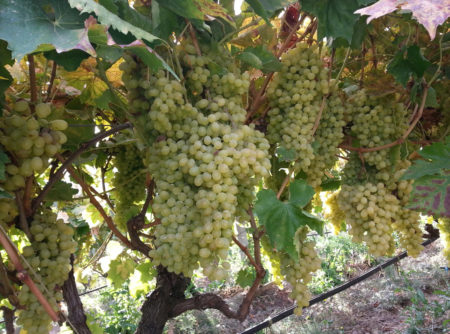
Refers to new varieties that breeders have worked on in the USA (California). Very early, berries ripen in three months. Forms powerful bushes, peduncles bisexual. The clusters are large, with densely packed berries in marble. Gron weight - 1.5-2 kg. Taste is excellent. There is a pronounced floral aroma. Resistant to disease, suitable for long-term transportation.
Black sultan
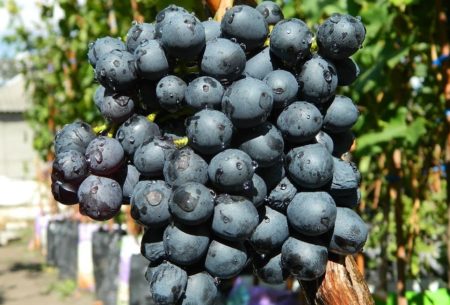
Another early grape with its original name. The hybrid forms an average cluster size weighing 300-400 grams. The berries are oval, 2-3 grams.It is ahead of other grades in sugar content (24-25%), acid - 5 g / dm3. Cultivated as a blanket species. Suitable for raisins. According to the category of seedlessness, it belongs to the transition group (2-3).
Red nutmeg
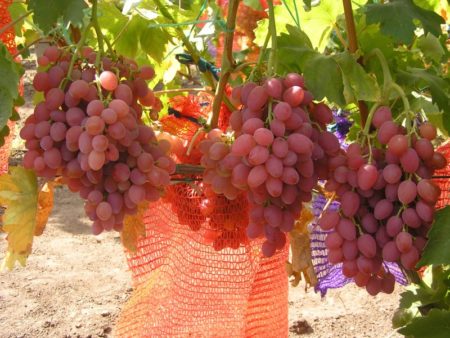
High-yielding grapes stand out among a group of raisins with bright red, crimson berries. Each weight is 6-7 grams, the taste is pleasant, nutmeg. Fruit picking - after 115 days (early variety). From powerful bushes of Muscat red, 5-6 kg of berries are collected.
Black cinnamon
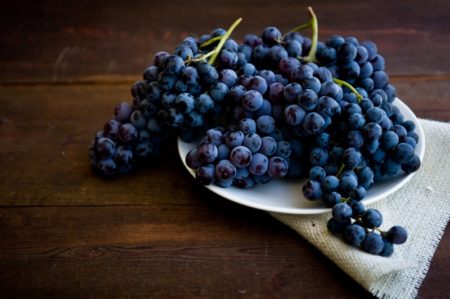
An ancient variety known in Europe since antiquity. Bushes are tall, with bisexual flowers. Berry picking - after 125-130 days. The berries are small, round, red-blue. The peel is covered with a plentiful wax spring. The taste is pleasant, aromatic.
Russian cinnamon
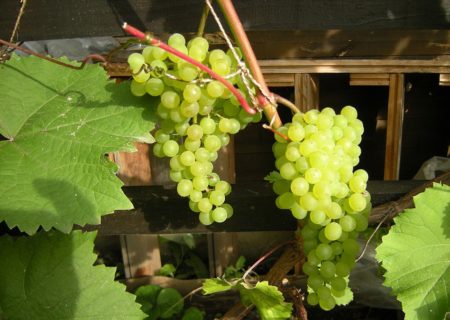
Grapes of domestic selection, included in the State Register of varieties of the Russian Federation.
Features:
- lack of seeds in the pulp;
- frost resistance;
- an opportunity to get an early harvest;
- sugar content - 22%.
Brushes are friable, massive, with a large number of berries. The color of the fruit is golden yellow, sometimes there is a pink tint. The taste is pleasant, without a characteristic grape aroma.
Himrod
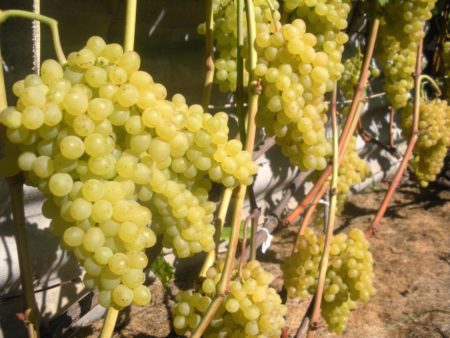
Grapes, popular in Japan and the USA, are distinguished by increased growth power of bushes, mid-early harvest, and yield. White raisins gives 6-7 kg of berries from the bush. The clusters are loose, 400-500 grams, cylindrical in shape. There are no seeds in the berries. The taste is pleasant, with an original fruity aftertaste.
Buffet
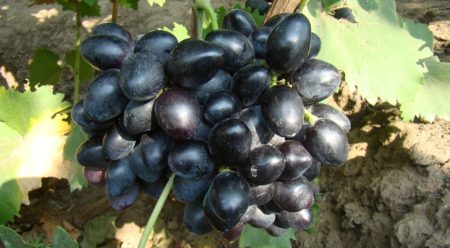
Hybrid form, appeared on the market in 2008. It differs in the growth of shoots, large grones and berries. Fruit weight - 12-16 grams. Dark blue berries are covered with a spring. The original taste is sweetness combined with notes of raisins, mulberry. Very high-calorie, high sucrose.
Long awaited
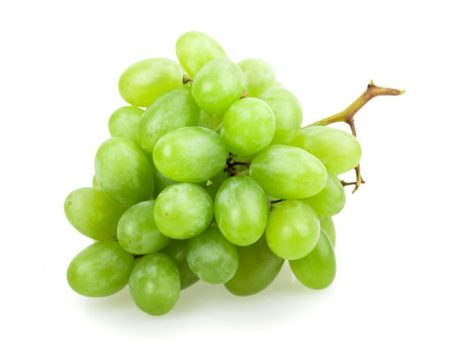
A hybrid that was born as a result of the crossing of the Talisman and the muscat Kishmish the Radiant. Included in the group of table species, grown on personal plots and on an industrial scale. It is called so by chance that the appearance was preceded by a long and painstaking selection work. Berries begin to ripen by early August (middle lane), the crop is removed at the end of summer. Bunches - up to 800 grams, berries - 10-12 grams. The pulp is fleshy, sweet-sour, no seeds.
Amur
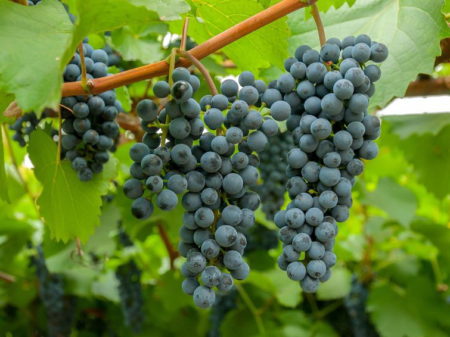
Under this name, there are several varieties. Amur seedless - early grapes (105-110 days), with whitish small berries. The weight of the brushes is 200-300 grams. In Primorye, berries ripen in late summer. It is characterized by high sugar content (22%), unpretentiousness, resistance to frost. 6-7 kg are removed from the bush.
The benefits and harms of seedless grapes
Kishmish have a pleasant taste, high in vitamins.The benefits of grapes:
- helps to increase immunity;
- improves mood, saves from depression;
- removes harmful toxins from the body;
- improves blood counts;
- gives a good effect in the treatment of colds;
- promotes rejuvenation.
An excellent dessert is obtained from the berries of raisins, and preparations are made (raisins, marinades, jams, jam). A number of varieties are used for the manufacture of wine, liquors, juices.
Harm:
- due to the high sugar content grapes without seeds are contraindicated in people with certain diseases (stomach ulcer, pancreatitis, diabetes mellitus);
- with excessive consumption of sweet grapes, diarrhea, flatulence, indigestion occur;
- grape juice worsens the condition of tooth enamel, therefore it is recommended to rinse the mouth after eating;
- calorie content - 60-100 kcal per 100 grams, so for those who are overweight and prone to obesity, it is advisable to exclude berries from the menu.
There are few contraindications, following the recommendations, there will be no harm to the body.
Conclusion
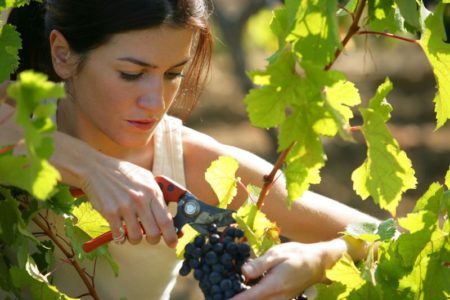
Delicious seedless quiche is cultivated in various regions of the country. A large number of varieties and hybrid forms have been developed, so that any gardener can plant seedless grapes on the site.
Reviews
Yuri, Nizhny Novgorod
I have been cultivating the raisins of Zaporizhia for more than 8 years. Grows on the south side of the country house, protected by a pine tree. The crop began to produce in the second year after planting. The berries are large, the taste is wonderful. The crop in 2016 suffered greatly due to wasps, so now I am always on the alert and prepare protection in advance. For all the years of cultivation, the variety was not sick.
Inna, Crimea
The third year is growing Jupiter grapes. In our region I wintered well, did not harbor. We have not been vaccinated, the kidneys have bloomed 100%. It can propagate by cuttings. It blooms the very first, on the shoot gives 2-3 inflorescences. Berries with strawberry flavor, but the peel is slightly harsh. It differs from grapes with seeds in sweetness and good taste.




 Non-covering winter-hardy grape varieties for Moscow region
Non-covering winter-hardy grape varieties for Moscow region How to keep the vine in winter
How to keep the vine in winter When can I transfer grapes to another place in the fall
When can I transfer grapes to another place in the fall How to cover and prepare grapes for the winter in the suburbs
How to cover and prepare grapes for the winter in the suburbs
Good morning, please tell me for thanks, which of the beldy, sweet varieties, preferably new, do you recommend?
Novel
Good morning, please tell me for thanks, which of the beldy, sweet varieties, preferably new, do you recommend?
Pohudet.Guru
The grapes are eaten fresh or dried, turning it into raisins (seed grapes) or raisins. Grapes are used in the production of wine. Also compotes, juices, marinades and so on are prepared from grapes. Use for decorative purposes. There are many varieties and hybrids of grapes, there are also grapes without seeds - raisins and cinnamon.